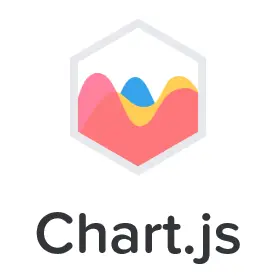Shortcode ChartJS
Table des matières

ChartJS est une bibliothèque JavaScript open source gratuite pour la visualisation de données (Wikipédia)
Le shortcode
J’ai trouvé le code ici.
A placer dans le dossier themes/MONTHEME/layouts/shortcodes/ et à nommer chart.html
{{ $w := default "100" (.Get 0) }}
{{ $h := default "300" (.Get 1) }}
{{ $r := ( .Inner | chomp) }}
{{ $seed := "foo" }}
{{ $id := delimit (shuffle (split (md5 $seed) "" )) "" }}
<div style="width: {{ $w }}%;height: {{ $h }}px;margin: 0 auto">
<canvas id="{{ $id }}"></canvas>
</div>
<script src="https://cdn.jsdelivr.net/npm/chart.js"></script>
<script type="text/javascript">
var ctx = document.getElementById('{{ $id }}').getContext('2d');
var options = {{ $r | safeJS }};
new Chart(ctx, options);
</script>Exemple
{{< chart 90 200 >}}
{
type: 'bar',
data: {
labels: ['Red', 'Blue', 'Yellow', 'Green', 'Purple', 'Orange'],
datasets: [{
label: 'Bar Chart',
data: [12, 19, 18, 16, 13, 14],
backgroundColor: [
'rgba(255, 99, 132, 0.2)',
'rgba(54, 162, 235, 0.2)',
'rgba(255, 206, 86, 0.2)',
'rgba(75, 192, 192, 0.2)',
'rgba(153, 102, 255, 0.2)',
'rgba(255, 159, 64, 0.2)'
],
borderColor: [
'rgba(255, 99, 132, 1)',
'rgba(54, 162, 235, 1)',
'rgba(255, 206, 86, 1)',
'rgba(75, 192, 192, 1)',
'rgba(153, 102, 255, 1)',
'rgba(255, 159, 64, 1)'
],
borderWidth: 1
}]
},
options: {
maintainAspectRatio: false,
scales: {
yAxes: [{
ticks: {
beginAtZero: true
}
}]
}
}
}
{{< /chart >}}Explications
On va prendre un exemple sur le site ChartJs.
Squelette de base
- type: ‘radar’
{{< chart >}}
{
type: 'radar',
data: {},
options: {}
}
{{< /chart >}}Les données
- Labels: 4 matières (Anglais,Français,Mathématique,Sport)
- datasets: Les notes de l’élève, couleur de fond, fill(remplissage)
- options: On rajoute un titre
{{< chart >}}
{
type: 'radar',
data: {
labels: ['Anglais','Français','Mathématique','Sport'],
datasets: [{
label: 'Note éléve Ducobu',
data: [12, 10, 14, 18],
fill: true,
backgroundColor: 'rgba(255, 99, 132, 0.2)',
borderColor: 'rgb(255, 99, 132)',
}]
},
options: {},
}
{{< /chart >}}On ajoute un élève
{{< chart >}}
{
type: 'radar',
data: {
labels: ['Anglais','Français','Mathématique','Sport'],
datasets: [{
label: 'Note élève Ducobu',
data: [12, 10, 14, 18],
fill: true,
backgroundColor: 'rgba(255, 99, 132, 0.2)',
borderColor: 'rgb(255, 99, 132)',
}]
},
options: {},
}
{{< /chart >}}Conclusion
Il faut bien organiser les données dans le fichier, au début c est un peu galére avec toutes les ,[(,)] …
Mais le resultat est sympa.
ChartJS generator
Quelques liens pour generer des données
https://quickchart.io/chart-maker/
Liens
https://github.com/shen-yu/hugo-chart
https://ordinarycoders.com/blog/article/11-chart-js-examples